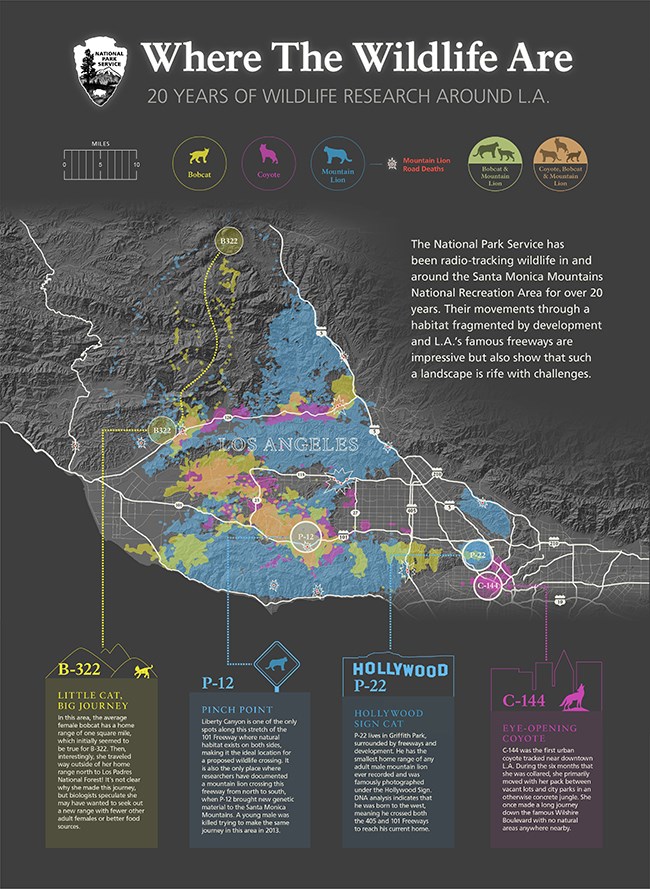
National Park Service
Research and monitoring of animals, plants, and ecological processes as they relate to urban areas is becoming incredibly important in an increasingly developed world. How might mountain lions, for example, persist for the next 50 years with so few viable routes into and out of the National Recreation Area? Will the California red-legged frog survive our current drought? Does runoff from Los Angeles and Ventura County have a measurable impact on our ecosystems? Conducting long-term research allows National Park Service biologists & resource managers to identify patterns through time and space, such as the movement ecology of bobcats in response to continuing road development and the persistent encroachment of non-native species like wild mustard. The National Park Service (NPS) has been overseeing long-term research and monitoring projects within the Santa Monica Mountains for decades in an effort to help inform management decisions and planning. Studies like the Puma Project, ongoing since 2002, have even garnered international attention! Years of data has shed light upon the way mountain lions adapt to pressures from human activity. Such intensive research has shaped public perception of wildlife, guided management practices, and influenced state policy. 
Where the Wildlife AreWhere the Wildlife Are is a visualization of over 20 years of NPS carnivore research. Each point represents the GPS location of a mountain lion, bobcat, or coyote tracked at a certain point in time, which helps us grasp how these species use the land alongside humans.Particularly interesting individuals like P-22 and B-322 have given us insight into some truly remarkable stories. In P-22’s case, his crossings of the 101 and 405 freeways have made international headlines! Sadly, successful crossings are more of an exception than the norm. Our hope is that with continued research and large-scale models like this one, we’ll be able to better understand how to conserve our public lands and protect our native species. Please note that areas without points still have wildlife inhabiting them; they just haven’t been subjects of study yet! Click on the image to be redirected to our Flickr page, where you can view and download our graphic in high resolution. 
Mountain Lion Research
Check out our Puma Profiles and read about the lives of the mountain lions we've been studying since 2002! 
Coyote Research
Coyotes have become incredibly well-adapted to living in urban landscapes, even cities. How does that play out in Los Angeles? 
Bobcat Research
Bobcats living on the edge of the second-largest city in the country face challenges. In what ways does our presence affect their health? 
California Red-Legged Frog Research
Formerly locally extinct, the threatened California red-legged frog has recently been reintroduced thanks to ongoing, multi-agency efforts. Inventory & Monitoring ProgramThe Park Service also performs research through the Mediterranean Coast Network Inventory & Monitoring (I&M) Program, a collaboration between teams at the Santa Monica Mountains, Channel Islands National Park, and Cabrillo National Monument.I&M studies focus on different “vital signs” that point to the health of the natural world as a whole. These vital signs range from indicator species like amphibians and reptiles (that tell us about terrestrial & stream habitat quality) to invasive plant presence (which helps us understand the resilience and recovery abilities of our native plant communities) and changing landscape dynamics. |
Last updated: February 3, 2021
